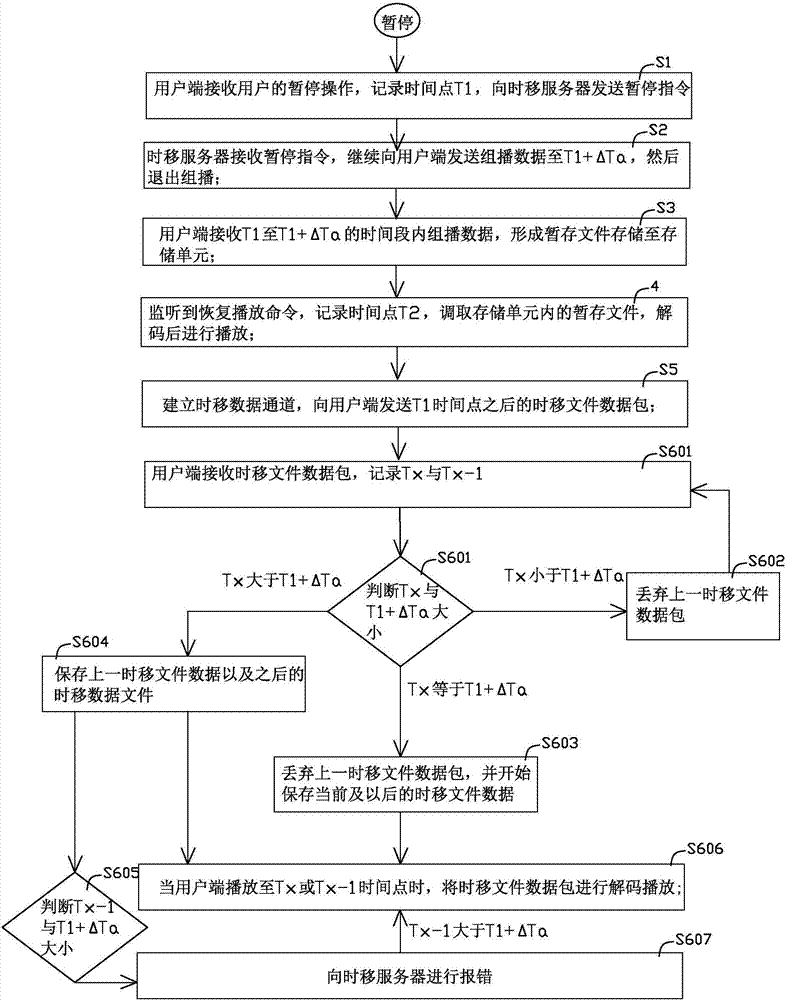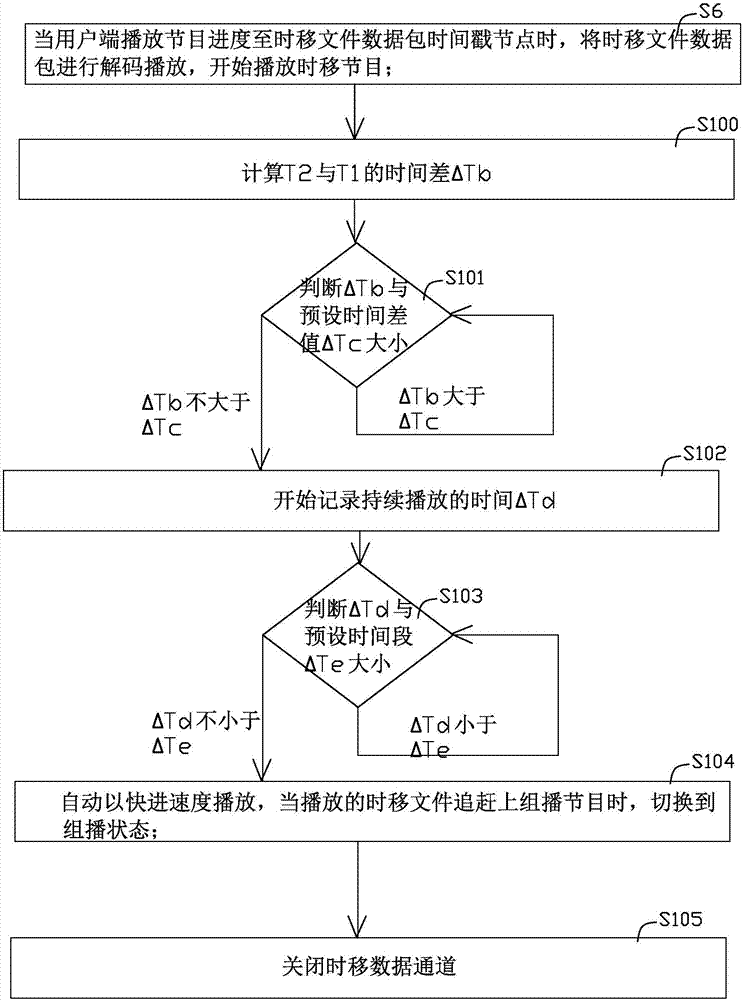Time shift on-demand playing method
A time-shifting and point-in-time technology, applied in the field of communication, can solve problems such as poor user experience and bandwidth waste, and achieve the effect of optimal user experience
- Summary
- Abstract
- Description
- Claims
- Application Information
AI Technical Summary
Problems solved by technology
Method used
Image
Examples
Embodiment 1
[0040] Such as figure 1 Shown, a kind of time-shift on-demand method comprises the following steps:
[0041] S1: Assuming that the user is watching the program "In the Name of the People" live and performs a pause operation at 8:00 (T1), the user end receives the user's pause operation, records the time point T1, and sends a pause command to the time-shift server;
[0042] S2: The time-shift server receives the pause command, continues to send live data to the client until 8:01, and stops sending multicast data at 8:01 and exits the multicast;
[0043] S3: the client forms a temporary storage file and stores the multicast program content from 8:00 to 8:01 in the storage unit;
[0044] S4: The user resumes the play command at 9:00. After listening to the resume play command, the user end records the time point T2 (9:00), retrieves the temporary file in the storage unit, plays it after decoding, and communicates with the server at the same time. Communication, sending an instr...
Embodiment 2
[0049] The difference between the time-shifted on-demand method of this embodiment and embodiment 1 is that, as figure 2 As shown, further defined, step S6 mainly consists of the following steps;
[0050] S601: The client receives the time-shifted file data packet, and records the timestamp information Tx of the current time-shifted file data packet and the timestamp information Tx-1 of the previous time-shifted file data packet, and determines the size of Tx and T1+ΔTa;
[0051] S602: When the judgment result is that Tx is less than T1+ΔTa, discard the last time-shifted file data packet, and repeat S601;
[0052] S603: When the judgment result is that Tx is equal to T1+ΔTa, discard the last time-shifted file data packet, and start saving the current and subsequent time-shifted file data, and perform step S606;
[0053] S604: When the judgment result is that Tx is greater than T1+ΔTa, save the last time-shifted file data and subsequent time-shifted data files; perform step S...
Embodiment 3
[0059] The difference between the time-shifted on-demand method of this embodiment and embodiment 1 is that, as image 3 As shown, it is further defined that the time-shifted on-demand method also includes the following steps after the S6 step:
[0060] S100: Calculate the time difference ΔTb between T2 and T1;
[0061] S101: Determine the size of the difference between ΔTb and the preset time value ΔTc. When ΔTb is greater than ΔTc, repeat step S101; otherwise, start step S102:
[0062] S102: Start recording the time ΔTd of continuous playback;
[0063] S103: compare ΔTd with the preset time period ΔTe, and when the comparison result is that ΔTd is not less than ΔTe, execute step S104, otherwise repeat step S103;
[0064] S104: automatically play at a fast forward speed, and switch to the multicast state when the played time-shift file catches up with the multicast program;
[0065] S105: Close the time-shift data channel.
[0066] Wherein, the fast-forward multiple of th...
PUM
 Login to View More
Login to View More Abstract
Description
Claims
Application Information
 Login to View More
Login to View More - R&D
- Intellectual Property
- Life Sciences
- Materials
- Tech Scout
- Unparalleled Data Quality
- Higher Quality Content
- 60% Fewer Hallucinations
Browse by: Latest US Patents, China's latest patents, Technical Efficacy Thesaurus, Application Domain, Technology Topic, Popular Technical Reports.
© 2025 PatSnap. All rights reserved.Legal|Privacy policy|Modern Slavery Act Transparency Statement|Sitemap|About US| Contact US: help@patsnap.com



